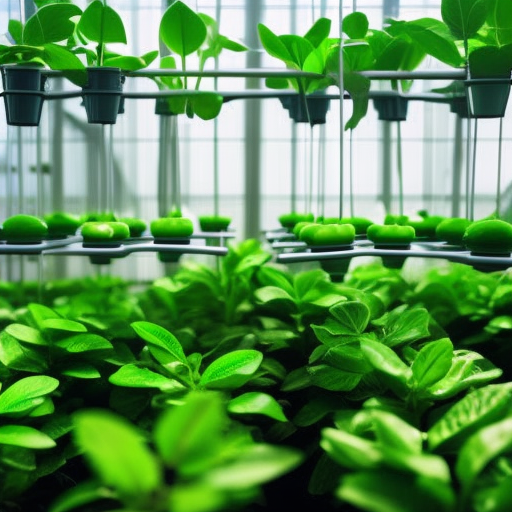Summary:
Hydroponics and aeroponics are two innovative methods of growing plants without soil. Hydroponics involves growing plants in a nutrient-rich water solution, while aeroponics involves suspending plants in the air and misting their roots with a nutrient solution. Both methods offer several advantages over traditional soil-based agriculture, including increased crop yields, faster growth rates, and reduced water and pesticide usage. However, they also require careful monitoring and management of nutrient levels, pH balance, and environmental conditions to ensure optimal plant growth.
Hydroponics:
Hydroponics is a method of growing plants in a water-based, nutrient-rich solution without soil. Instead of relying on soil to provide nutrients, plants in hydroponic systems receive all the necessary nutrients directly from the water solution. This allows for more efficient nutrient absorption and faster growth rates compared to traditional soil-based agriculture.
In hydroponics, plants are typically grown in containers filled with an inert medium such as perlite, vermiculite, or coconut coir. The roots of the plants are submerged or periodically flooded with the nutrient solution, ensuring they have constant access to the necessary nutrients. The solution is carefully monitored and adjusted to maintain the optimal nutrient levels and pH balance for plant growth.
One of the main advantages of hydroponics is its ability to maximize crop yields in a limited space. By providing plants with the exact nutrients they need, growers can optimize their growth and minimize resource wastage. Hydroponic systems also use significantly less water compared to traditional agriculture, as the water is recirculated and reused within the system.
Aeroponics:
Aeroponics is a variation of hydroponics that involves growing plants in an air or mist environment, with their roots suspended in the air. Instead of submerging the roots in a nutrient solution, plants in aeroponic systems are misted with a nutrient solution at regular intervals. This misting provides the roots with the necessary nutrients and oxygen, promoting rapid and efficient growth.
Aeroponics offers several advantages over hydroponics and traditional soil-based agriculture. The misting of the roots in aeroponics ensures that the plants receive a highly oxygenated environment, which enhances nutrient absorption and promotes faster growth rates. The absence of soil also eliminates the risk of soil-borne diseases and pests, reducing the need for pesticides.
Like hydroponics, aeroponics requires careful monitoring and management of nutrient levels, pH balance, and environmental conditions. The misting intervals, nutrient concentration, and humidity levels must be optimized to ensure optimal plant growth. Additionally, aeroponic systems are more complex and require more precise control compared to hydroponic systems.
Conclusion:
Hydroponics and aeroponics are innovative methods of growing plants without soil. Both methods offer numerous advantages over traditional soil-based agriculture, including increased crop yields, faster growth rates, and reduced water and pesticide usage. However, they also require careful monitoring and management of nutrient levels, pH balance, and environmental conditions to ensure optimal plant growth. Hydroponics involves growing plants in a water-based nutrient solution, while aeroponics involves misting the roots with a nutrient solution. These methods have the potential to revolutionize agriculture by providing more efficient and sustainable ways to grow crops.












